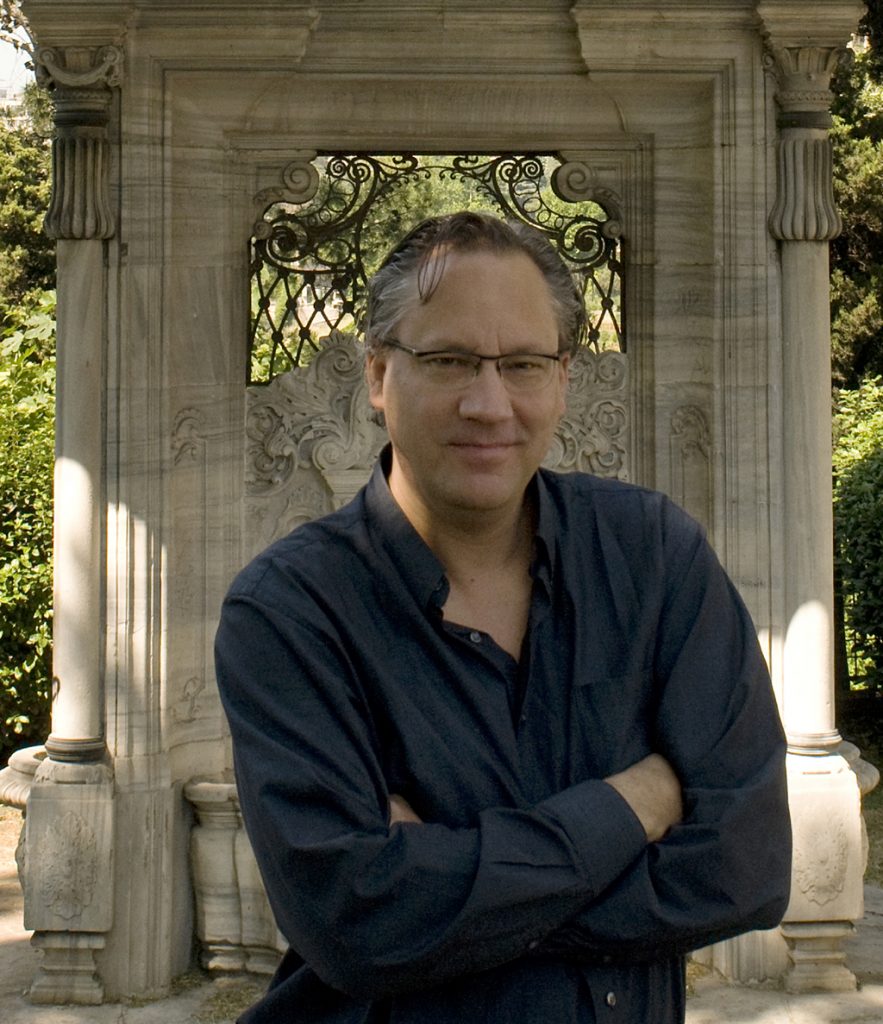Ince and Moe works stand out in Collage New Music’s generous program

Conductor David Hoose and Collage New Music set their sights on a wide-ranging program Sunday night at Pickman Hall, nearly all of which were Boston premieres.
The evening’s most rewarding discoveries were works by Kamran Ince, and Eric Moe.
Ince has drawn upon Turkish themes for many of his works, as with his Symphony No. 2 that draws upon the country’s history. Waves of Talya, which Collage offered Sunday night, reflect personal experiences in the country where he spent his youth.
Composed in 1988 for chamber ensemble, Waves of Talya reflects Ince’s experiences as a child in Antalya, a town on the Turkish Mediterranean coast that offers sublime views of the mountains and sea.
Ince opens the seventeen-minute score to striking effect as piano and glockenspiel combine with chattering figures in the winds and strings. The composer’s melodies bear the exotic shapes of Turkish makams (scales). Yet all is conveyed through lush, romantic orchestration.
Some passages are deceptively simple. At the work’s height, clarinet, flute, and strings render a unison melody while the piano supplies depth to the sound with powerful octaves. Vitality returns as the music breaks into zesty dance rhythms, which bring the piece to a rousing conclusion.
With sweeping melodies and churning rhythms conveying both nostalgia and wonder, Waves of Talya is a masterpiece of late-20th-century chamber literature. The Collage musicians played with rapt intensity under Hoose’s firm direction.
Eric Moe’s Tough Songs About Death was just as compelling. This work from 2017 sets four poems by Dorianne Laux that capture the lingering anger and anguish of those left behind after the death of a loved one.
Scored for soprano and chamber ensemble, the twenty-minute work conveys an urgency that rarely finds solace. “Lapse” unfolds with surging melodies that gradually smooth out into silvery harmonies in “What’s Broken.” A cello interlude frames “Shouldering the Dead,” where eerie scratches and groans dissolve into a steady groove. (In Sunday’s performance, cellist Jennifer Lucht played with abandon, tossing off the part’s double stops and harmonics.)
“Death Comes to Me Again, A Girl” turns towards dark humor. Cascading figures in the strings and winds express the playfulness of the ghost of a young girl, who spies upon the living. Here and throughout the work, soprano Tony Arnold searchingly conveyed Moe’s mix of wit and emotional desolation.
Completed in 1974, Joan Tower’s Breakfast Rhythms I comes from a time when the composer was drawn to serial techniques. At eight minutes, the score is a study in sparse textures, pointillistic melodies, and driving rhythms, a consistent theme in Tower’s music.
Scored for chamber ensemble with percussion, the work features a prominent clarinet, which introduces a lonely theme that becomes more animated in the full ensemble. Tower keeps the music in a constant state of flux, and the phrases churn forward before concluding in sustained clarinet phrases, which clarinetist Alexis Lanz rendered with smooth tone and conviction.
Breakfast Rhythms I is not among Tower’s best efforts, and Sunday’s reading revealed it to be a rather dull, academic affair, even when played with the assurance and lyricism Hoose and the Collage musicians brought to it.
Two works by Matthew Ricketts and Ryan Chase were more convincing.
Ricketts’s Seven By Seven (2016) has a rather prosaic title reflecting that it’s a seven-minute work composed for seven instruments (flute, clarinet, violin, viola, cellos, piano, and percussion).
Ricketts’s music is thoroughly engaging. The score opens with a single note that is passed between piano and vibraphone. As the gesture gradually spreads into intervals that encompass an octave, the strings and winds peel out flourishes for an effervescent texture.
Yet there is a sense of depth and breadth in Ricketts’s clever orchestration, and Seven By Seven feels like a compact concerto for orchestra, where all of the themes cluster in a web of sound. Hoose led the performers in a surprisingly delicate reading to give the score stellar advocacy.
Ryan Chase’s Stargazer, which opened the concert, was similarly energetic. This short work from 2012 is more an exploration of shimmering instrumentation than an expression of exact themes. The four brief movements involve tremolo effects, glistening sonorities in strings and percussion, and a bustling rhythm that never abates.
Chase’s harmonies are broadly tonal, with dissonances used more for colorful effect than for creating tension. His melodies shift direction abruptly, creating little sense of stability or flow.
But those elements work well given the Stargazer’s subject—the view of the night sky as seen from the summit of the Rocky Mountains. The lines vividly reflect images of constellations, meteor showers, the glow of the moon, and a genuine feeling of viewing it all in awe. Hoose and the musicians rendered the work with verve and superb advocacy.
Collage New Music will present music by Callaway, Sears, Adès, Merryman, and Froom 8 p.m. March 29 at Pickman Hall. collagenewmusic.org
Posted in Performances